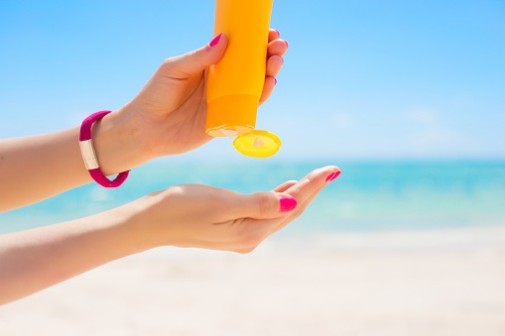How to choose the right sunscreen

Summertime is about being outdoors, soaking up the sun and enjoying the weather. But, with the heightened risk of getting skin cancer from laying out, understanding everything about sunscreen is vital in preventative health.
Sunscreen contains something called a sun protection factor (SPF). This is what helps absorb, reflect or scatter the sun’s ultraviolet rays from damaging a person’s skin.
SPF rates the effectiveness in blocking UV rays (UV-A and UV-B) by measuring the length of time it takes to sunburn. This means that if a person uses SPF of 30, it would take 30 times longer to burn than if a person isn’t wearing any sunscreen at all, according to the National Institutes of Health.
Dermatologist recommend everyone stay protected when outdoors.
“The American Academy of Dermatology recommends that people wear a minimum of SPF 30 for the best protection from long-term effects of ultraviolet radiation and to minimize skin cancer risk,” says Dr. Martha Arroyo, dermatologist at Advocate Condell Medical Center in Libertyville, Ill. “For children 6 months and older, we recommend an SPF greater than 30 to maximize protection. Also, it is important that sunscreen be reapplied every two to three hours, especially after swimming, to ensure adequate protection. Children under the age of 6 months should not have sunscreen applied, but rather be protected with umbrellas, hats and clothing.”
According to the Centers for Disease Control and Prevention, sunscreen should be applied at least 30 minutes before going outside so that it can be absorbed by the skin. Also, don’t forget that sunscreen does wear off so a person must reapply every two hours.
To apply sunscreen properly, the CDC has the following tips:
- Make sure to shake the bottle so all particles in the product are combined.
- Use an ounce (handful) to cover your entire body.
- Cover all parts of your body including ears and feet.
- Apply the sunscreen thickly and thoroughly.
Sun damage can be caused if people do not apply sunscreen properly.
“Sun spots and extensive freckling can be caused by ineffective application of sunscreen and lack of sun protection,” Dr. Arroyo says. “Apply approximately 2 to 3 ounces of sunscreen to exposed areas and ask someone to help you cover areas of your body you cannot reach.”
Look for labels that say “broad spectrum” and have an SPF of at least 30 when buying sunscreen to protect against UV-A and UV-B rays. Also, try different sunscreens if a person has a reaction to one since they are not all made with the same ingredients.
Most importantly, be aware of the expiration date, Dr. Arroyo says.
Related Posts
Comments
About the Author
Rebecca Lipman is a current student at Michigan State University (MSU). She is from Buffalo Grove, Illinois; however, her family recently moved to Arizona. Rebecca is therefore someone who travels a lot between her three homes and loves it. At MSU, she is a communications major with a specialization in public relations. She’s also a member of the Public Relations Student Society of America (PRSSA) and the operations manager of a certified non-profit organization called Spartan Global Development Fund. In addition to interning for the Public Affairs and Marketing Department at Advocate Condell Medical Center, Rebecca is a server at an Italian restaurant. In her free time she enjoys spending time with family, friends, and her puppy.

















